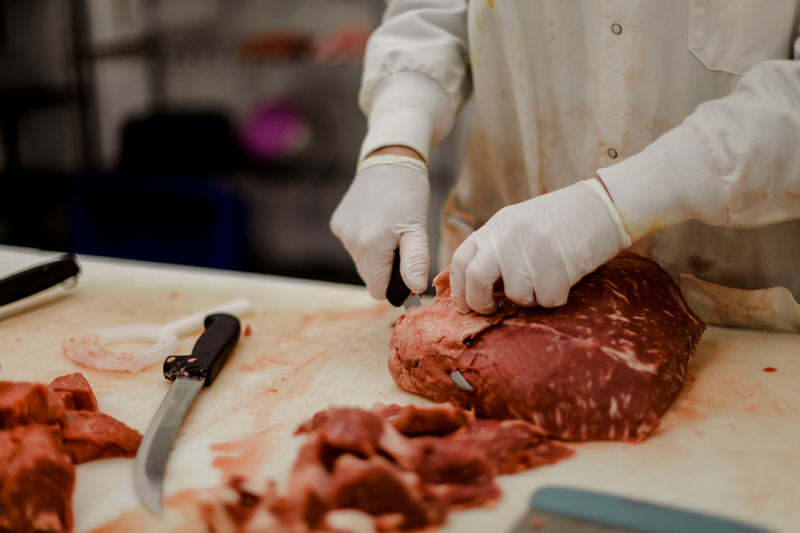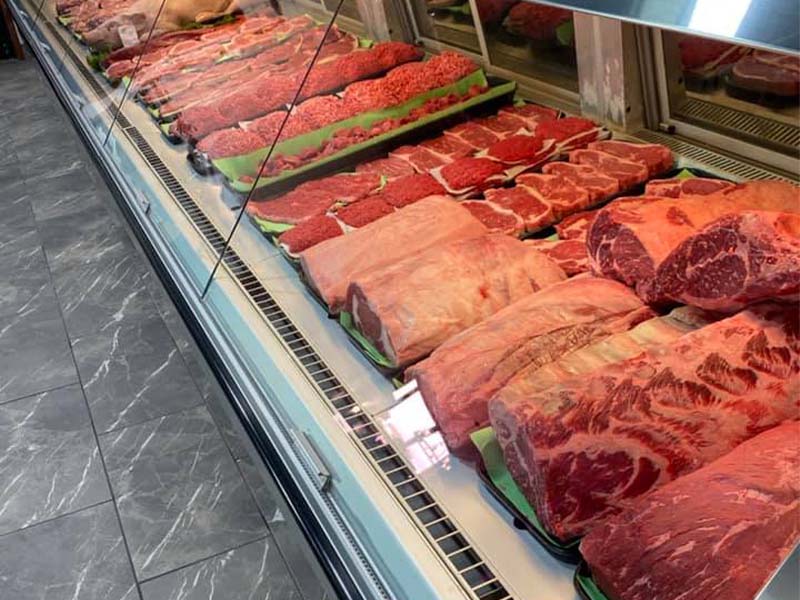Discover the Art of the Butcher's Cut in a Modern Meat Market
In the ever-evolving landscape of modern meat markets, the butcher's cut has actually transcended its standard roots, combining age-old craftsmanship with modern methods. What really sets the modern-day butcher apart is their capability to forge a deeper connection between customers and the origins of their meat.
Advancement of Butchery Strategies
The development of butchery techniques mirrors an abundant tapestry of development and adaptation driven by innovations in innovation, changes in customer demand, and a much deeper understanding of meat scientific research. Historically, butchery was a craft passed down with generations, with methods refined over centuries to make best use of yield and taste. The industrial change ushered in mechanization, changing conventional techniques and allowing large processing.
The mid-20th century saw butchery methods better fine-tuned by scientific understandings into muscular tissue biology and meat aging, enhancing both inflammation and preference. Advancements like vacuum cleaner product packaging and refrigeration expanded product shelf-life, permitting butchers to diversify offerings and enhance top quality control. This period likewise marked the rise of specific devices, such as band saws and meat slicers, which boosted accuracy and performance in meat handling.

Electronic systems now assist in monitoring animal provenance and maximizing cuts to fulfill certain customer choices. Furthermore, a revival in artisanal butchery has arised, blending typical abilities with modern knowledge to provide to consumers seeking moral and lasting meat choices.
Comprehending Meat Cuts
Understanding the details of meat cuts is crucial for both butchers and customers seeking top quality and value. Each cut originates from a various part of the pet, giving unique tastes, textures, and food preparation methods - bagley farms meat market edwardsville il. Proficiency of these distinctions not only boosts culinary experiences yet likewise maximizes the energy of each carcass. For butchers, precise cuts show ability and respect for the craft, making certain minimal waste and ideal yield.

Comprehending muscle mass composition is crucial; muscular tissues utilized much more regularly by the pet tend to be harder and are best fit for slow food preparation methods, while less-used muscular tissues, like those discovered in the loin, are more tender and perfect for grilling or roasting. Knowledge with these distinctions encourages consumers to make informed options, enhancing their cooking endeavors.
Picking Quality Meat
Selecting the right meat includes even more than just choosing an aesthetically appealing piece from the display screen. The art Extra resources of selecting high quality meat calls for a discerning eye and understanding of details attributes that represent freshness and quality.
Secondly, consider the marbling, which refers to the white flecks of fat within the muscular tissue. Proper marbling is an essential indication of tenderness and flavor, as it thaws throughout cooking, enhancing the meat's juiciness. Keep in mind, greater marbling often associates with exceptional quality cuts, such as USDA Prime.
Structure is an additional critical aspect; meat must feel firm to the touch, not slimy or excessively soft. In addition, be conscious of the aroma. Fresh meat needs to have a tidy, neutral scent, devoid of any kind of sour or repulsive smells.
Combining Cuts With Food Preparation Approaches

Alternatively, tougher cuts like brisket and chuck roast are rich in collagen, which damages down into gelatin when prepared gradually. These cuts are perfect for braising or slow-moving roasting, allowing the meat to tenderize gradually and create deep, complicated tastes. Cuts such as short ribs and pork shoulder fare well with slow-cooking methods, where prolonged cooking times change their durable textures into succulent meals.
Lamb shanks and oxtail, which call for prolonged cooking to tenderize, are ideal prospects for cooking or slow you could check here simmering. These techniques coax out abundant, passionate tastes while keeping moisture. By recognizing the one-of-a-kind qualities of each More Info cut, chefs and home chefs alike can boost their cooking productions, ensuring each recipe is both pleasing and memorable.
The Butcher's Role Today
Browsing the developing landscape of the modern meat market, the butcher's duty today extends past mere prep work of cuts. Contemporary butchers are culinary craftsmens, teachers, and advocates for sustainable techniques.
Along with crafting exact cuts, butchers now involve straight with clients, supplying cooking recommendations and tailoring choices to fit specific requirements and choices. Their experience in meat aging, marbling, and flavor accounts encourages consumers to make enlightened decisions, boosting their culinary experiences. This tailored service exemplifies the butcher's advancing function as a relied on advisor in the kitchen area.
Additionally, butchers are essential in decreasing waste, utilizing whole animals to produce varied items such as sausages and stocks. This extensive technique not just values the pet but additionally aligns with contemporary sustainability goals. By doing this, the modern-day butcher personifies both practice and technology, adjusting to an ever-changing market while preserving the artistry and integrity of their craft.
Conclusion
Mastery in understanding varied meat cuts and high quality indicators empowers butchers to provide enlightened referrals, lining up particular cuts with optimal cooking approaches. By recognizing historical practices while welcoming modern demands, the butcher's function remains vital in today's innovative meat market.
Comments on “Check Out the Neighborhood Taste at Bagley Farms Meat Market Edwardsville IL: Fresh and Delicious”